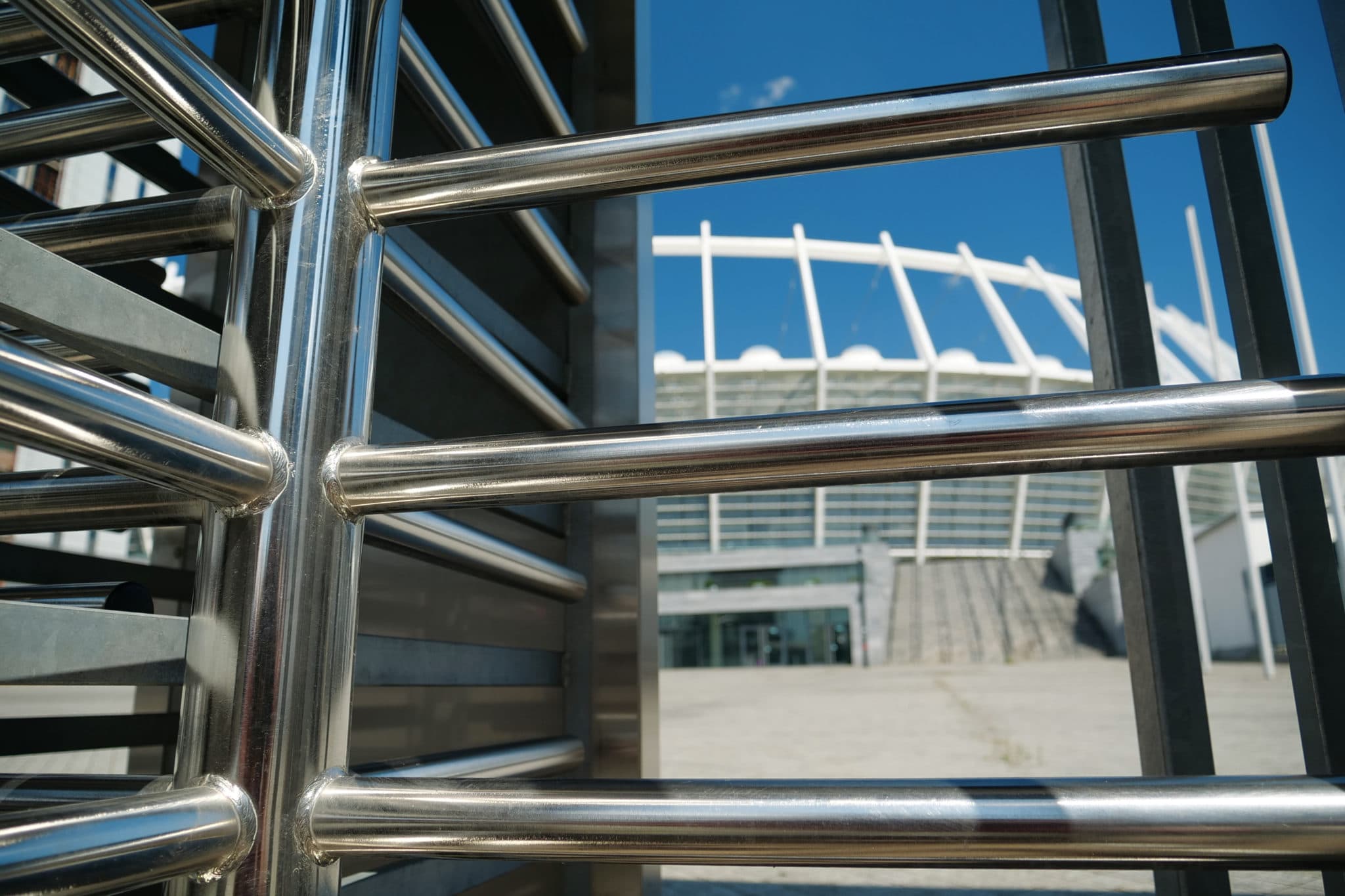
Graham England, Regional Installation Manager, Heras explains what you need to know when designing and installing turnstiles for football stadiums.
Stadiums throughout the UK football pyramid – including many leading Premier League grounds – have turnstiles from Heras installed. I myself have overseen the vast majority of these projects and, for this reason, I wanted to discuss some of the key considerations involved with specifying turnstiles for football grounds as well as a variety of other sporting stadiums.
The storming of Wembley during the Euro 2020 final last summer – where ticketless fans tried to gain access to the stadium to watch the match between England and Italy – threw the issue of turnstiles inadvertently into the spotlight.
And, while the headlines about the subsequent review by Baroness Casey focused on her comments about the “perfect storm of lawlessness” that was created by “a horde of 6,000 or more ticketless fans, many of whom were no more than mindless thugs”, for those of us in the perimeter protection solutions industry, the incident serves to highlight the pivotal roles that entrance control systems such as turnstiles play in safe entry and exit at stadiums.
The Green Guide – or the ‘Guide to Safety at Sports Grounds’ to give it its proper title – is recognised around the world as best practice for the safe design, planning, management and operation of sports grounds; our encyclopaedic knowledge of all these rules and regulations, not just around the turnstiles themselves, but all the wider factors, is the reason we have a portfolio of case studies of red, blue, light blue and even old gold installations.
Throughout this article I have outlined a few key considerations around the design and installation of turnstiles in stadia.
Access control
Forgive me for stating the obvious, but correctly specified turnstiles should facilitate the fast and efficient flow of spectators with the correct entry means into the stadium – and they should also be capable of withstanding unauthorised attempts at intrusion, even where a level of force is applied. Similarly, they should be part of the solution for the safe exit or even evacuation of the stadium.
Entry capacity
The entry capacity is the number of people who can pass through all the turnstiles or entry points serving either the whole ground or one section within a period of one hour. Factors that affect this include: The design and condition of turnstiles; The number and dispersal of turnstiles; The efficiency of the system and where electronic entry cards are in use, the ability of spectators to understand the system.
Counting people in
Again, something that sounds obvious but is a massive consideration is that stadium management teams need a means of counting all spectators as they enter to control numbers to ensure that overcrowding does not occur.
A good metering system should be capable of recording the overall total for all the turnstiles and this total should be quickly available at any given time so that appropriate action can be taken once a pre-determined figure has been reached. Management teams also need this figure to assess how long it will take for the remaining people outside the ground to be admitted before the start of the event.
How many turnstiles?
Although the entry capacity is determined by the number of spectators who can be admitted within a period of one hour, in the case of football, large numbers of spectators typically arrive close to kick-off, so this is a key factor in determining the number of turnstiles or entry points to be provided.
It is also important to point out that certain turnstiles, for example those designated for children and families, will operate slower than others. In some cases turnstiles are not suitable, such as for use by wheelchair users, visually impaired spectators and people with assistance dogs.
For all spectators to be admitted in time for the start, therefore, a larger number of entry points may be required. We know from experience that some football stadiums – which have the capacity to admit crowds in excess of 50,000 fans – have more than 120 turnstiles around the ground.
The design and management of entrance and entry routes
This is where Heras’s expertise really comes to the fore – based on years of knowledge and experience, we know that entrances to each part of the ground should, wherever practicable, be designed and located to allow for the even distribution of spectators and to prevent local pressure building up outside the ground.
The regulations say that the design of a turnstile and its housing should allow the operator to see and communicate clearly with entrants. However, the use of ticketless technology is gathering pace, and it’s fascinating to see some of the latest innovations such as booking systems that scan the face of the person purchasing the ticket online and provide data to facial recognition systems at the turnstiles.
Up to standard
Reputable suppliers of turnstiles manufacture and install to the following standards:
Don’t forget to service turnstiles
After turnstiles have been designed and installed, we strongly recommend that they are serviced on an annual basis – with the best time to do it in summer (during the football off-season). Not only does this give peace of mind that turnstiles are in tip-top working order for the coming season but it also ensures compliance with manufacturers’ requirements and the regulations outlined above.
For more information about Heras, go to: www.heras.co.uk
This article was originally published in the June 2022 edition of Security Journal UK. To read your FREE digital edition, click here.